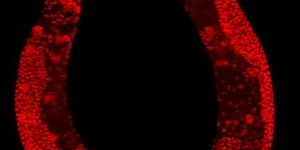Can Tiny Bubbles Clean Our Water?
Mike Mitton of Mitton Valve Technology in Brantford, Ontario, Canada accidentally discovered that his racing-engine valve tests were creating a process that could remove unwanted materials from water, called cavitation. During cavitation, mechanical energy creates microscopic voids or bubbles that can affect their environment when they pop. It turns out that the tiny, breaking bubbles are quite powerful.
“We started running water through these high-speed valves. And, it started making all kinds of noises,” he said of the valve-flow test that led to the discovery of what is now called the Mitton Cavitation Reactor, in a March 2018 news conference. The event was held at Frank Millard and Co. in Burlington, which now has distribution, marketing and servicing rights for Mitton’s bubbly tech in the U.S.
Cavitation bubbles create a suctioning effect when they collapse. This causes a shockwave or strong disturbance in fluids that produces shearing forces -- forces pushing in opposite directions. Cavitation breaks emulsions and separates out what Mitton refers to as the “really, really nasty” parts of the water. An emulsion is a mixture of two liquids in which one is distributed throughout the other.
Cavitation has already been used in water treatment plants in the way that Mitton envisions, and he also sees applications for his device in wastewater remediation for natural resource extraction industries, such as oil and gas, along with in food and beer processing.
Similarly, a group of scientists at Virginia Tech is studying whether these tiny bubbles can provide a zero-chemical process for cleaning produce. This team hopes cavitation can pull dirt, Salmonella bacteria and other undesirous substances from the surfaces of fruits and vegetables.
The Mitton Cavitation Reactor can also be used in agriculture as a nutrient recovery system, such as in the recovery of nitrogen and phosphorous, which can be reused in farming but can become dangerous pollutants when released into the natural environment. For example, they can cause algae blooms that may reduce oxygen in the water, leading to fish illnesses. Mitton’s reactor is already being deployed in Florida to remove phosphorous and nitrates from lakes. It is scheduled to be used in agricultural runoff remediation and nutrient recovery to protect the Mississippi River watershed in the spring of 2018.
“This is breaking an emulsion. It’s not meant to be a filter … This takes the front-end load off the wastewater treatment plant,” Mitton said, advising the audience not to expect crystal-clear water as a result of his product demonstration. During his presentation, he showed how a small “bench-top” unit separated both Greek yogurt and manure from two 20-gallon tanks of water. Dairy is very hard to separate from water, he explained. Within about 20 minutes, the emulsions were separated. Mitton said the invention can even remove odors. This demonstration reactor is mechanically identical to industrial models, which can process about 1,300 gallons a minute. They can also be combined to go through about 6,000 gallons a minute.
Researchers from Purdue university have also studied cavitation as a water purification method, but they experimented with ultrasound frequencies to create the useful bubbles.
Check out Mitton’s demo below:









